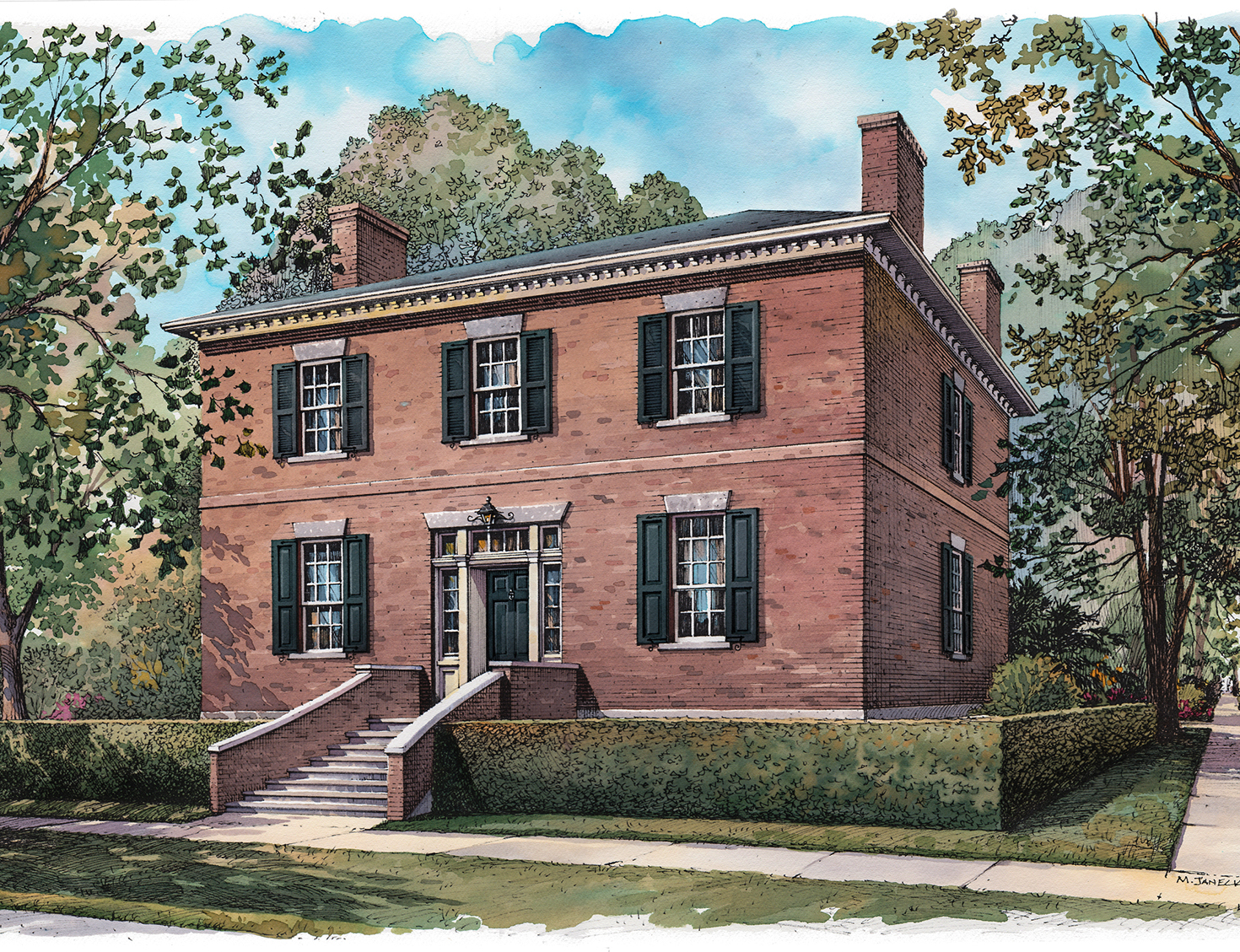
The 1823 Breakenridge House Rescue
As John Breakenridge’s success and family grew, so too did the size and grandeur of his homes. Beginning in 1816 with a modest Loyalist Georgian, by 1819 he had stepped up to a larger, more prestigious Neo-Classical clapboard clad house. However, within three years, his affluence was such that he could afford to build a home that reflected his arrival as a member of the gentry. In style it would be Regency in the cubic two storey form recently legitimized for the “well-heeled” by the 1819 completion of the Upper Canada Legislative Assembly building in York. It would be constructed of expensive brick with large windows and a high foundation to accommodate an indoor kitchen with servant quarters in the basement. Eleven fireplaces serviced by four tall chimneys would provide for both heating and cooking requirements. No expense was spared in the building of this stately home (seen in the architectural rendering left); with walls 3 wythes thick and interior brick supporting walls rising from basement to roof joists. Over the next century and a half, the grand lady sheltered a variety of prominent citizens and families until the mid-1960’s when it was acquired by a couple whose modus-operandi appears to have been one of benign neglect. This classic Regency was boarded up, left vacant and derelict for the next 60 years until a new owner committed to the significant expense of preserving and restoring this singularly important example of Canadian architectural heritage. And now, this story of rescue, preservation and restoration begins… Working to preserve the past for the future.
More Breakenridge House Rescue >>>

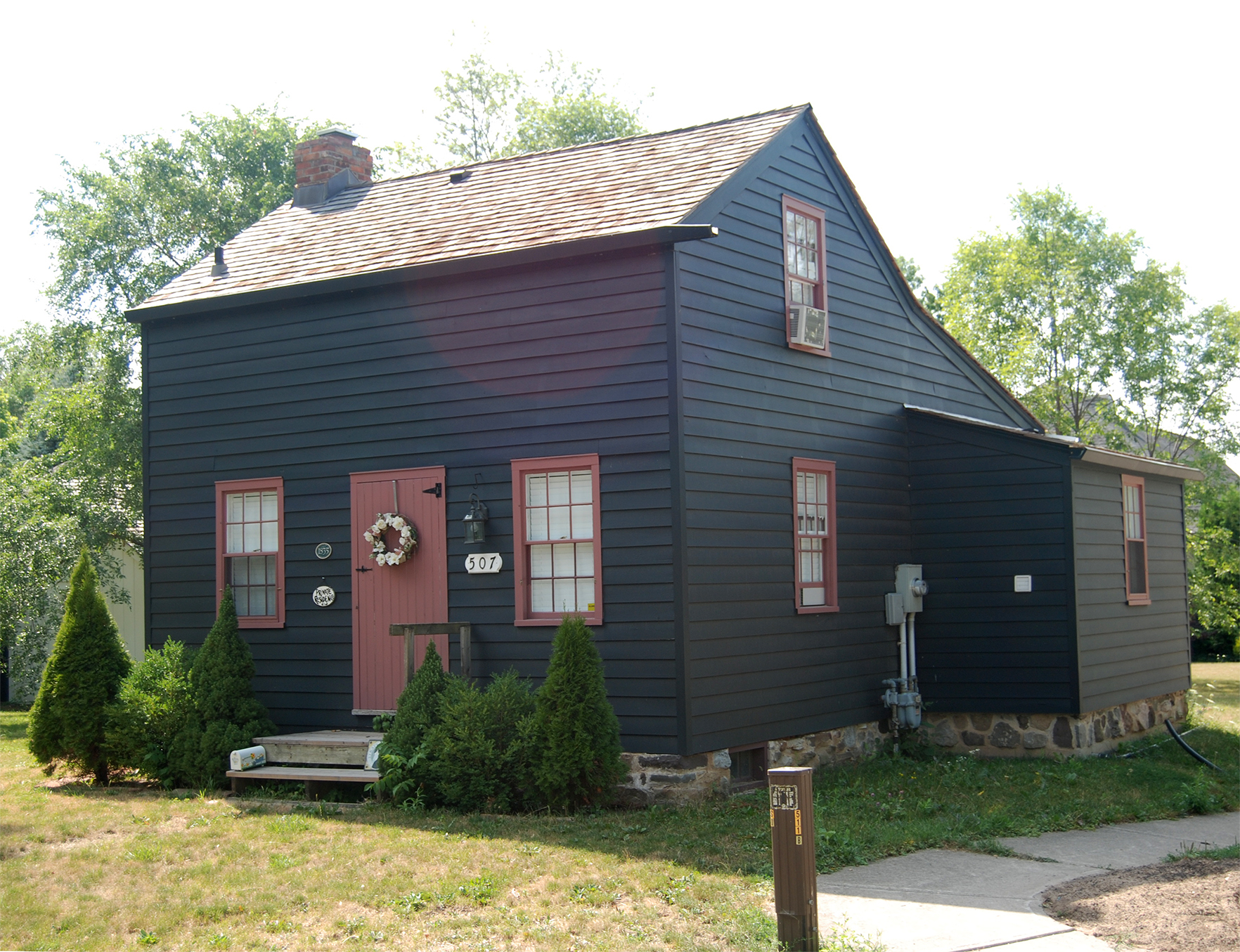
Stackhouse (One-over-One)
Built by William Steward, a former slave who fled to freedom in Canada, and his wife Susannah, circa 1834/1835, this modest house is one of very few surviving examples of a Stackhouse (or One-over-One) in Canada. Still found occasionally on the US eastern seaboard, these houses would have been common at the time of Mr. Steward’s servitude. Stackhouses were homes of the average working family; with a single large room on the 1st floor & a 2nd floor room “stacked” directly above. The house was typically one and two-thirds storeys. Very often, when finances permitted, a one-storey shed roofed addition would be built on the side &/or back of the home. Generally, a steep winder stair wound around the chimney stack or was tucked into a corner of the chimney wall. Restored by the Niagara Foundation, it remains a private residence.

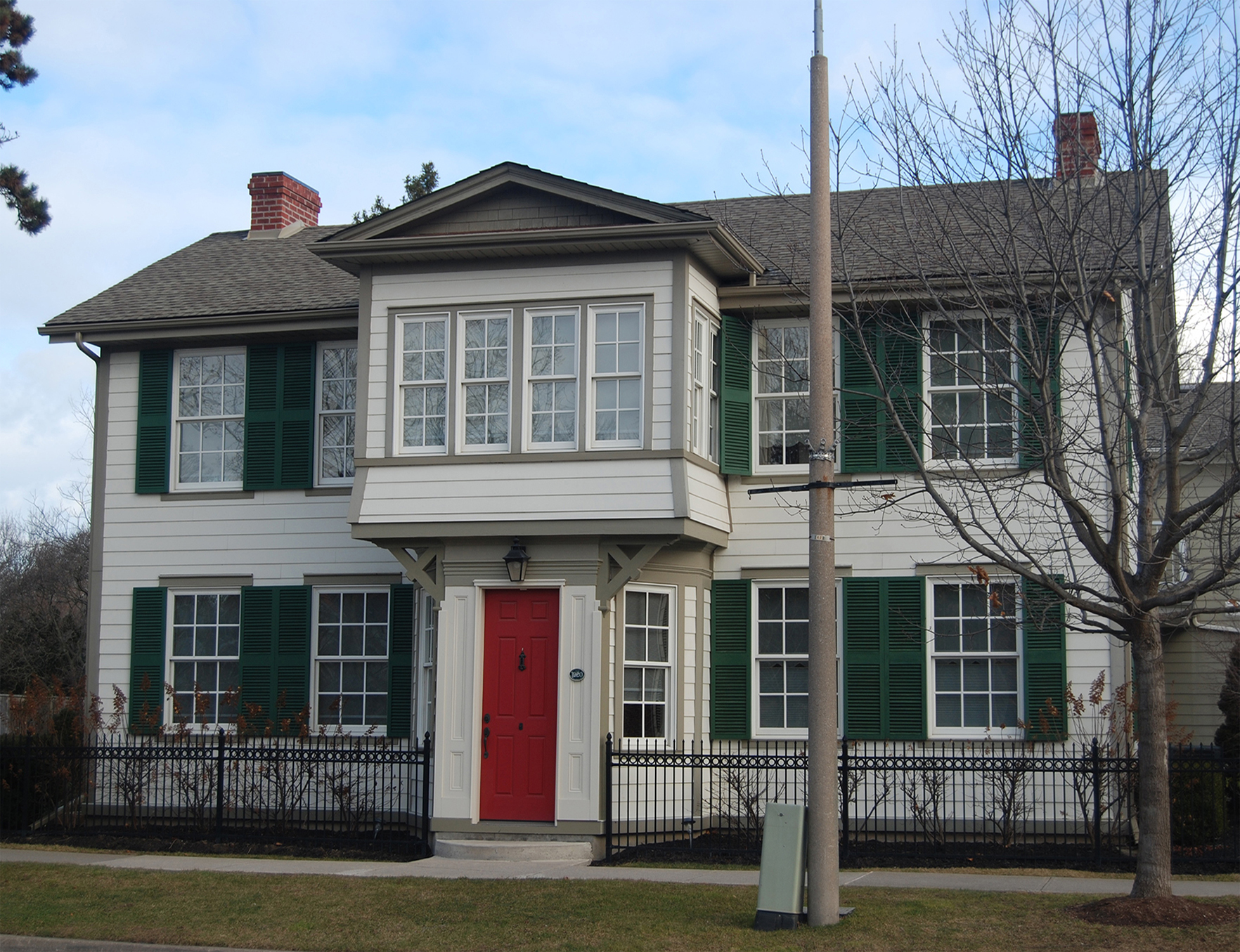
A Rare Form
Reported to have been built by Tenny Peabody circa 1820, the basic form is Georgian, however, its projecting frontispiece completely transforms the facade of this house. Likely inspired by the frontispieces found on UK half-timber houses built during the 15th & 16th centuries, this expression was very uncommon in North America. In fact, we have found only a handful of period examples (e.g. Henry Bridgham House), all built on the US eastern seaboard. Unfortunately, these houses have not survived, making this home an exceedingly rare form. The designer involved truly went the ‘extra mile’ to make this frontispiece a statement: clipped corners each side of the entry, beefy brackets under the overhang, a pedimented gable & 10 double hung windows. IF all the windows are ‘as-built’, this would be extraordinary in the 1820’s when glass was very expensive.


Successful Marriage
In 1839, William Woodruff built a substantial Georgian home with a 3 over 5 Bay facade in St. David’s. By 1880, the family fortunes had grown and his son, Henry, doubled the size of the house with a Gothic Revival addition. Often, when 2 distinct design styles are brought together, the result is discordant; elements of one clashing with the other. Or worse, the elements on the original house are modified in an attempt to match the new style negatively impacting the balance and proportions. In this case however, the Woodruff’s forged a complementary relationship between the two distinct style ‘partners’ effectively accentuating the elements of each in a fashion that is harmonious & pleasing to the eye. The clapboard provides horizontal continuity while the brilliant paint scheme of the current owners enhances the Gothic’s horizontal elements effectively marrying it to the Georgian’s linear style.


Labour of Love
In 1782 Empire Loyalist Jacob Ball built the first grand house here on the 1200 acres granted him by the Crown. That house was lost in the War of 1812, but his son George rebuilt on the same foundation in 1820 using 88,000 bricks laid in a 5 layer thick Flemish Bond to restore the family seat. Unfortunately fire struck in 1904 & again in the Great Depression (1934); the latter destroying most of the 2nd storey. In 1996, a new owner purchased a sad, neglected derelict that had lost any shadow of its former grandeur (see ca 1946 image). Working from a circa 1890 photograph, this gentleman committed himself to a full restoration. Over 10,000 period bricks were cleaned and laid together with local stone quoins to rebuild the 2nd storey. Century old glass was sourced & used in the re-glazing. And this was only the beginning. It took 15 years & well over $1 million to restore Locust Grove to its former glory.
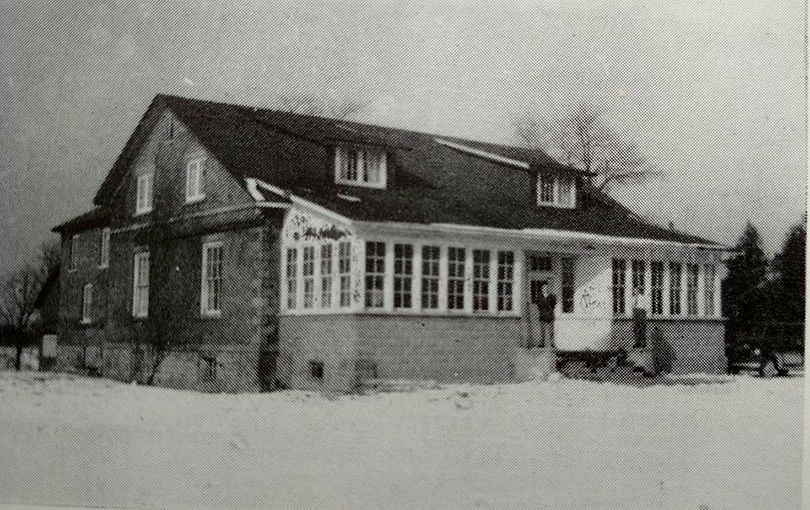

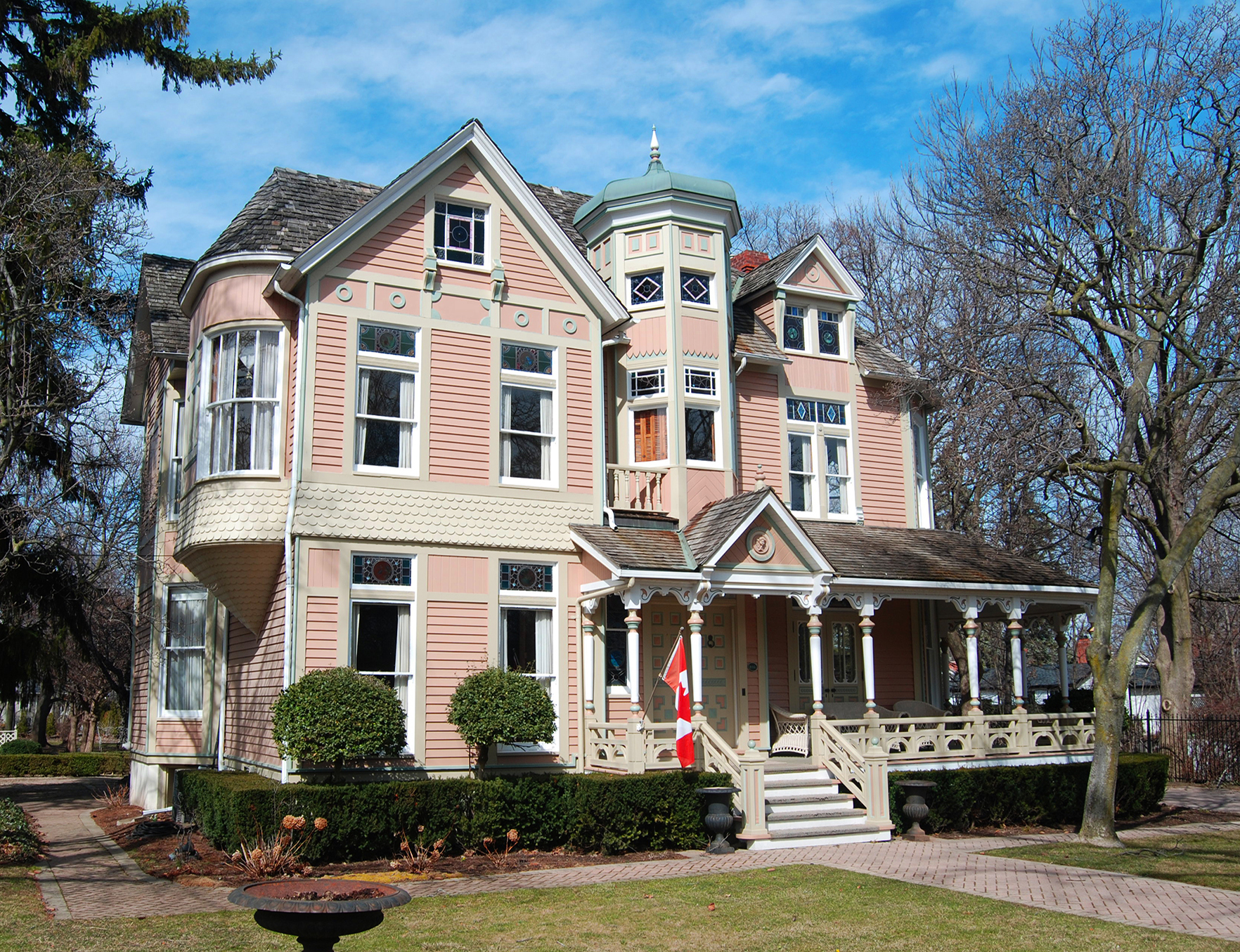
A Victorian Lady
This glorious Queen Anne was commissioned by S.B. Rowley (also spelled Rawley), a wealthy Philadelphian, in 1880. Here, he met and married Fanny Ross, the granddaughter of William Riley (one of the earliest African-American landowners in Niagara-on-the-Lake). Fanny Rowley, not content to be the ‘lady of the house’, for over 20 years very successfully traded in real estate in her own name. Upon her husband’s passing in 1905, Fanny liquidated her Niagara holdings including (amongst others): the Rowley Block (Queen & Regent), 143 King Street, Lot 276 (Mary & Victoria), and this splendid home in Niagara on the lake. “Fanny’s House” with its copper capped octagonal tower, shingle & clapboard cladding, stained glass & graceful curved porch, is an outstanding example of its kind & a lasting monument to an exceptional Victorian woman.
